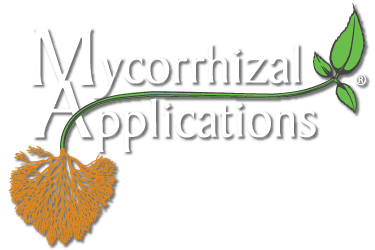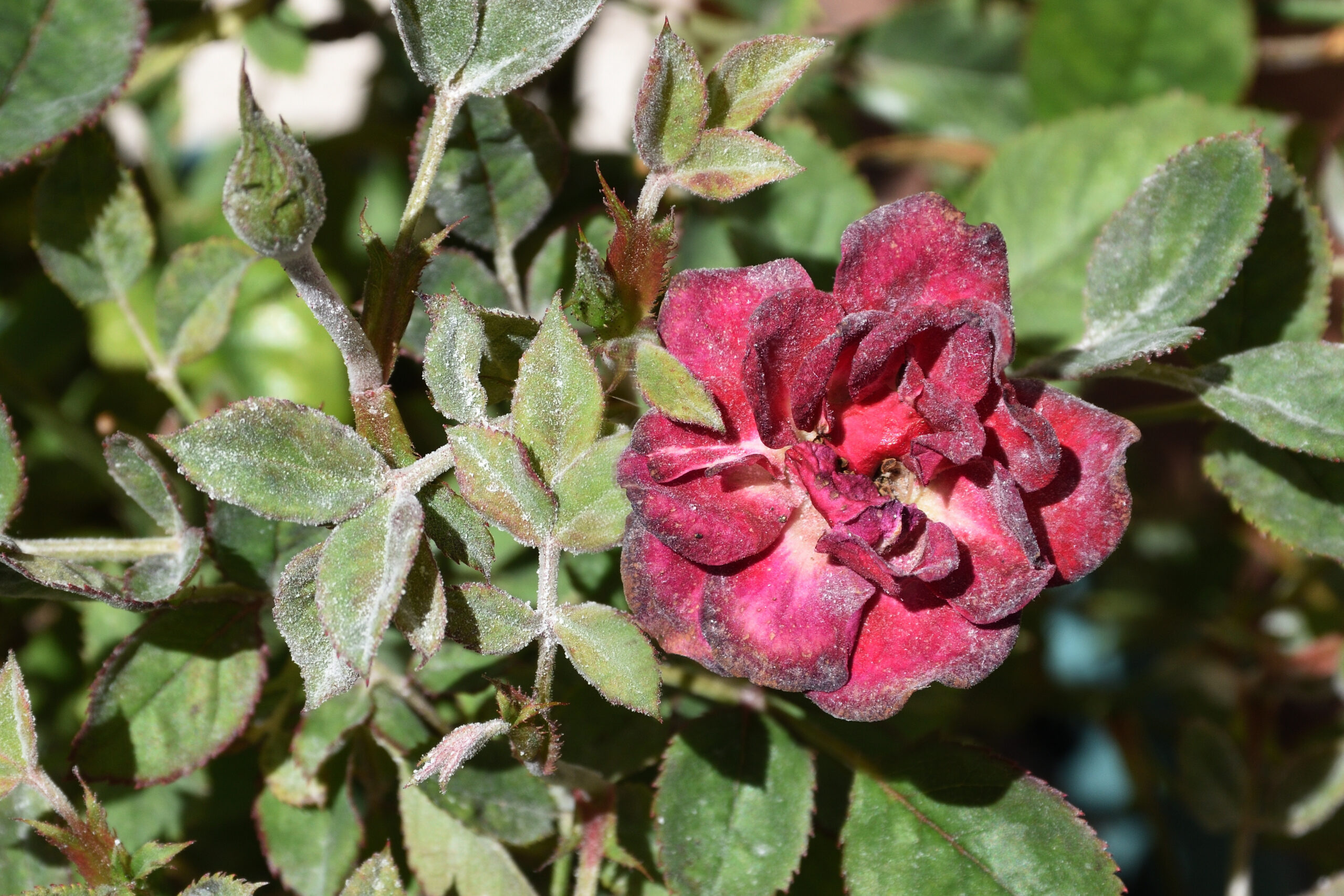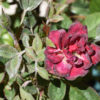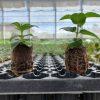Pathogenic microbes are a challenge everyone trying to raise plants is familiar with, from the home gardener to the largest grower, and horticulturalists are no exception. It has been estimated that microbial diseases, most of which are fungal, destroy about 16% of agricultural production globally, on par with insect-caused losses and second only to weeds. This article will cover the top 5 greenhouse fungal pathogens and how Actinovate Biofungicide can help.
Starting with the serendipitous discovery of the Bordeaux mixture in 1882, the constant threat posed by microbial diseases has led to the development of several efficacious fungicides over the past 140 years that are widely used in plant production around the world to keep fungal pathogens at bay.
However, while modern plant production is hardly conceivable without the help of these products, challenges abound. Current conventional fungicides rely on a very limited number of mechanisms to control pathogens (so-called “modes of action”), and resistance is on the rise against almost all of them. Some pest populations are now resistant to multiple commonly used fungicides simultaneously, leaving the grower with few options. On the customer side, concerns about the toxicity of chemical residues in general, in combination with a renewed interest in the production of their plant- and animal-based purchases, are changing buying decisions and have started to alter the commercial landscape. Interestingly, this trend recently has significantly accelerated – COVID-19 led to a noticeable uptick in customer demand for crops produced organically and in a sustainable fashion.
Biorational pesticides are ideally positioned to help with these challenges, both when used in combination with conventional products and in the context of sustainable programs relying exclusively on organic solutions. They often have multiple modes of action that are different from conventional fungicides, making them ideal partners for resistance management. By their very nature, they are more sustainable than chemical solutions, and the large majority are certified for organic production.
Enter Actinovate
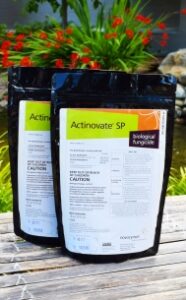
Actinovate is a proven biorational fungicide that has demonstrated its value to growers for over 10 years and has been adopted across a wide variety of uses across the agricultural and horticultural industries. It is based on the activity of a living beneficial bacterium of the Genus Streptomyces, Streptomyces lydicus. Streptomycete species are soil-dwelling microorganisms that have been used by the pharmaceutical industry for a long time – two out of every three antibiotics used in medicine today, as well as many other drugs were originally discovered in Streptomycetes. Actinovate unlocks the incredible potential of these microbes for use in agriculture, horticulture, landscaping, lawn care, home gardening, and more.
When applied, the bacteria in Actinovate protect plants via several, independent mechanisms (Modes of Action):
- Actinovate bacteria will establish themselves and grow on the plants, thereby filling up space and consuming available nutrients that are then no longer accessible to pathogens (“competitive exclusion”).
- While growing, the Streptomycetes will produce compounds to directly combat other, detrimental microbes (“antibiosis”).
- The bacteria in Actinovate are well known to produce and secrete Iron-collecting molecules called siderophores. Not only does this preclude pathogens from acquiring iron (availability of iron is a crucial limitation for many pathogens), but research has also shown that this iron is made available to the plant, promoting growth, especially under iron-limiting conditions.
- Scientific research has also shown that Streptomyces lydicus can attach to and directly feed off pathogenic fungal spores and mycelia, killing the fungal pathogens in the process.
- Application of Actinovate induces a benign plant immune response known as ISR/SAR, bolstering resistance against disease on a systemic level.
This overview of the different modes of action of the product can also serve to illustrate two of the characteristics that set live microbial products like Actinovate apart from more conventional pesticides and need to be taken into consideration:
- Live microbials need to be able to grow on / colonize the plant for many of their benefits, like competitive exclusion and production of anti-microbial compounds, to manifest. Consequently, it is recommended to avoid anything that could negatively impact their viability before or during application, like storage under extreme conditions (hot or freezing). During application, tank mixing with products that have bactericidal activity (like peroxide-based products) should be avoided.
- Most effects from the application of these products will take some time to manifest; by definition, biological pesticides must have a non-toxic mode of action, meaning they do not act by directly killing the pathogen with toxic compounds like most conventional chemicals. Colonization to provide protection needs time, and the induction of plant immunity can take more than 48 hours to fully establish. This is the basis of why these biofungicides are ‘protective’ and not ‘curative’, in contrast to conventional, ‘toxic’ fungicides. Applying biorational products after a full-blown disease outbreak has already occurred will most likely not yield the desired results, as neither the protective organism nor the plant will have the necessary time to respond.
When taking these considerations into account, biorational products can be amazingly effective both as partners in a conventional (e.g. for resistance and residue management) or as solutions in an organic program.
Addressing Pythium, Rhizoctonia, Powdery mildew, Fusarium, and Botrytis
As a broad-spectrum fungicide with several modes of action, Actinovate can help in the management and control of many common fungal diseases. Here are the top 5 greenhouse fungal pathogens in horticulture and how Actinovate can help with their management: Pythium, Rhizoctonia, Powdery mildew, Fusarium, and Botrytis
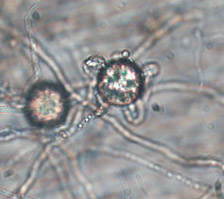
Pythium
Pythium:
Several species of Pythium (e.g. irregulare, ultimum and aphanidermatum) are known to attack plant roots and pose a significant problem in the horticultural industry. These microbes are common in the environment and can also be found as contaminants in commercial soilless potting media. Some (e.g. P. ultimum) have very broad host ranges.
As a soilborne organism colonizing plant roots in a symbiotic relationship (Actinovate was originally isolated from the roots of a linseed plant), the Streptomyces bacterium is ideally suited to protect plants from this type of pathogen. All of its diverse modes of action described above – competitive exclusion, antibiosis, nutrient segregation, fungal predation, and plant immune induction come into play. Given enough time ahead of a pathogen exposure Actinovate will colonize and grow with the plant roots and shield them from the fungus.
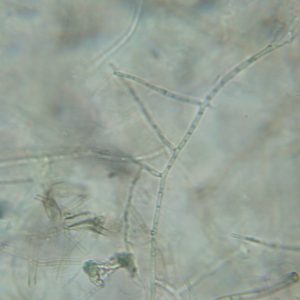
Rhizoctonia
Rhizoctonia:
Another soilborne greenhouse fungal pathogen causing damping off, root and stem rots, and in some cases leaf blights, often in summer. Similar to some species of Pythium, Rhizoctonia has a very broad host range and can infect many different plants. If applied proactively and with sufficient time to colonize, Actinovate is extremely effective in controlling Rhizoctonia – in recent field trials against Rhizoctonia solani, Actinovate showed pathogen control comparable to both SDHI (FRAC group 7) and strobilurin (FRAC group 11) type conventional fungicides when applied at planting.

Powdery mildew
Powdery mildew:
Powdery mildew diseases are caused by a diverse group of fungi belonging to the Erysiphales. Individual species are very specialized towards a certain plant species in that they can usually only infect this specific host (and sometimes closely related plants). In contrast to many other plant pathogenic fungi, powdery mildews are obligate biotrophic, meaning they need to keep the plant cells they are feeding off alive to survive. Here is where the SAR/ISR induction mode of action of Actinovate comes into play – this plant immune response evolved as the primary line of defense against biotrophic pathogens, and its preventive activation by foliar application can protect the plant from infection.
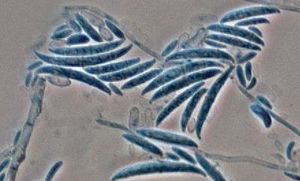
Fusarium
Fusarium:
Fusarium wilt is another common soilborne greenhouse fungal pathogen which is caused by Fusarium oxysporum. Seedborne transmission, while possible, is rare in commercial seeds. Instead, the inoculum is normally introduced via the growth medium and can be a significant problem e.g. in greenhouse tomato production, where many of the used varieties are susceptible. Once in contact with the roots, the fungus enters the plant through wounds or root tips and invades the Xylem from where it then spreads.
Similar to Pythium and Rhizoctonia, Fusarium wilt is a fungal disease where Actinovate can play to all its strengths to protect the plant. Once established on the root system, Actinovate effectively forms a protective barrier and can bring all its different modes of action to bear to prevent the pathogen from invading the host. It is also a good example of why preventive application is so crucial – once Fusarium has become entrenched in the vasculature, access is limited and many of the more direct avenues of fungicidal attack are no longer open.
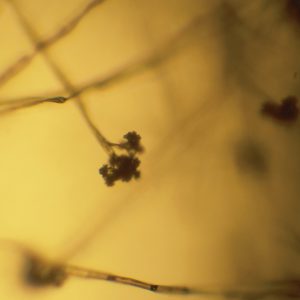
Botrytis
Botrytis:
Another fungus attacking the foliar part of the plant, Botrytis cinerea is a necrotrophic fungus with an extremely broad host range causing Gray mold. It can infect more than 200 plant species and estimates of the yearly damage caused by this fungus alone range from $10 billion to $100 billion per annum.
Preventive foliar applications of Actinovate have proven efficacious against Botrytis; Actinovate has been successfully used as part of the organic programs of some of the biggest US berry producers for years.
Conclusion:
Actinovate is a broad-spectrum biorational fungicide that has proven its worth and efficacy over the past 10 years and continues to perform today. With both soil and foliar uses, multiple modes of action, great applicator safety, and no residue concern – it can serve both as the cornerstone of an organic or as an ideal rotation partner in a conventional program.
Article by: Johannes Mathieu
Valent BioSciences – Product Development Manager
July 6, 2020
Last Updated 4/26/2024
